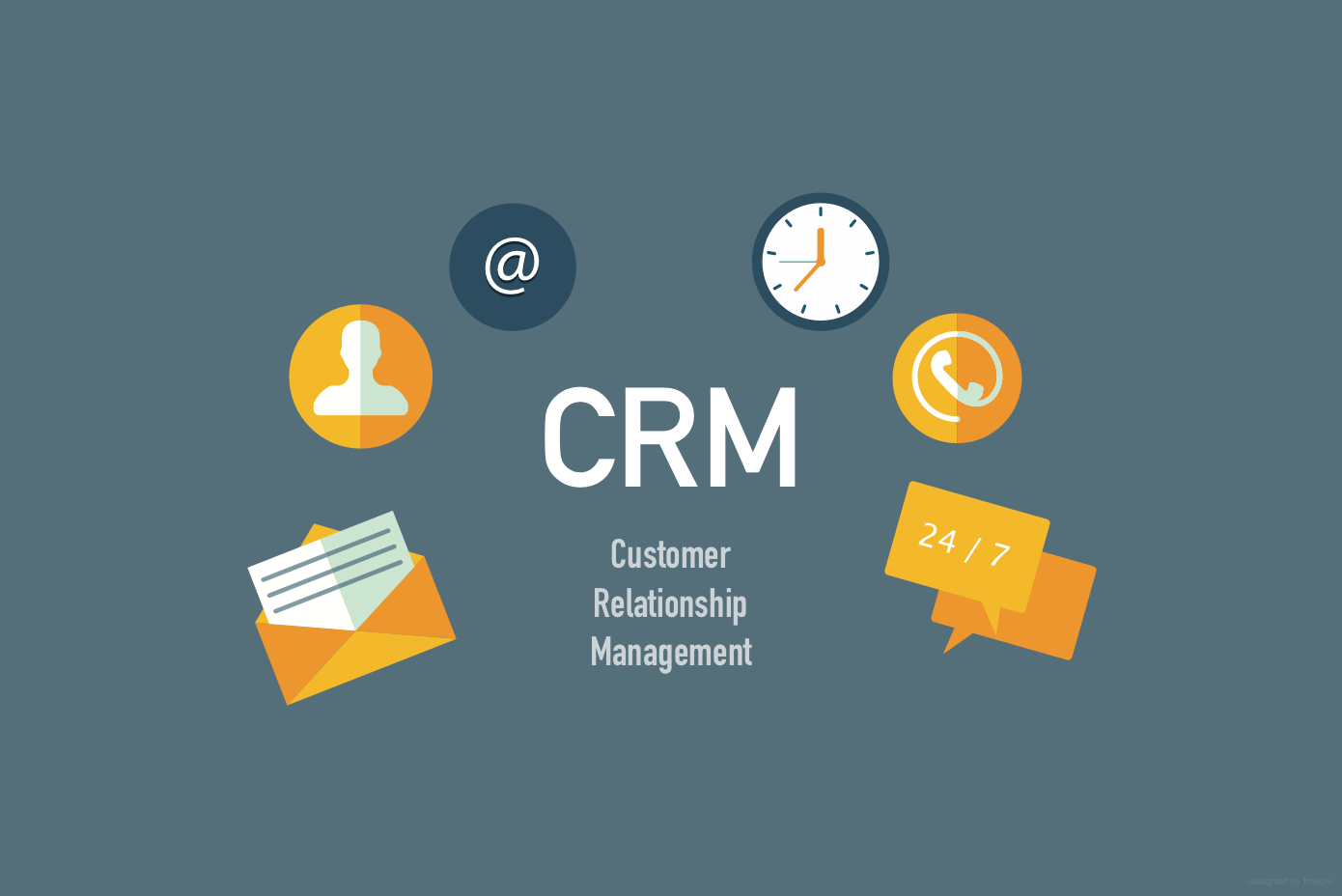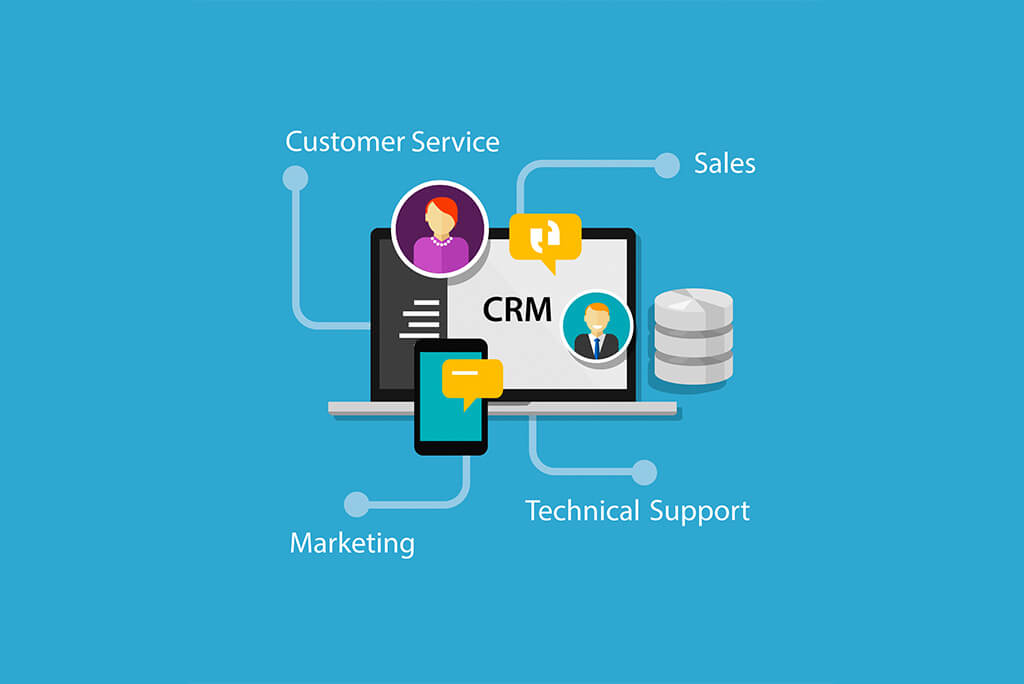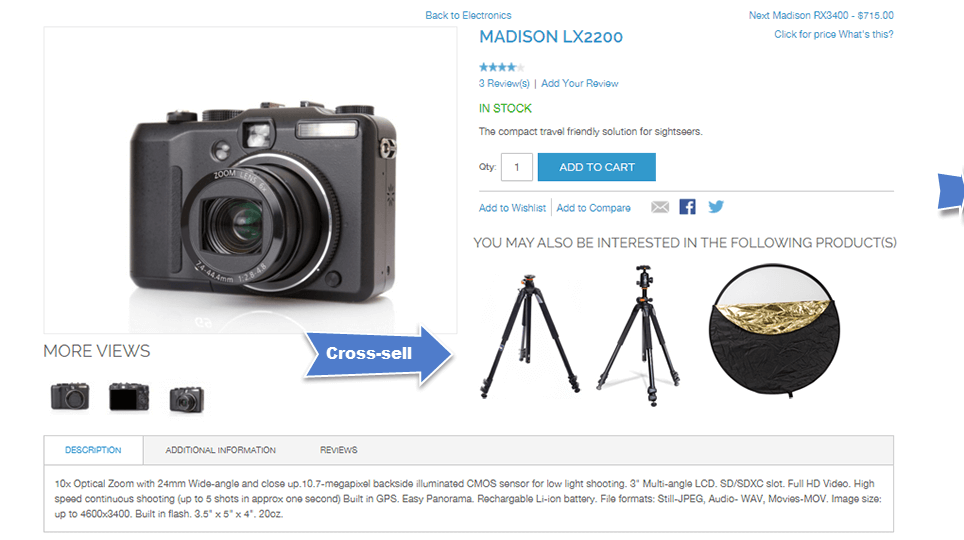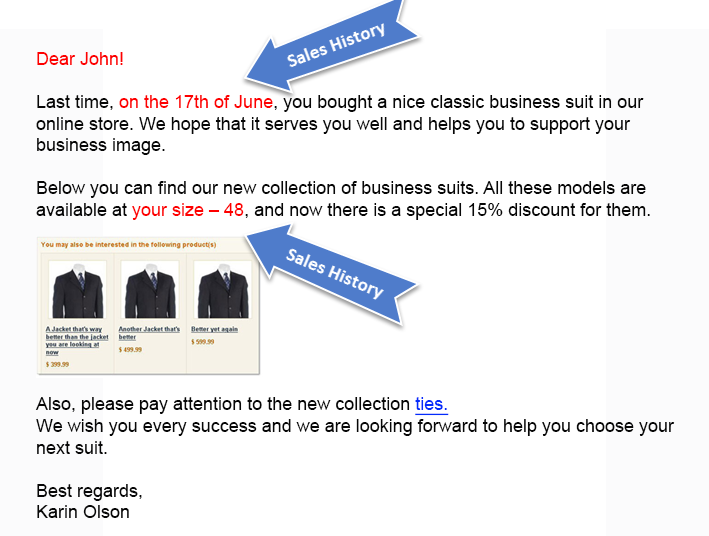Broadly speaking about Customer Relationship Management (CRM), we mean not a software but a philosophy of business, and consider CRM tips accordingly.
If you can keep the information about your clients by making notes in your organizer book and you are able to find the necessary information quickly – it is also CRM, just without using IT technologies.
Nowadays in the business environment, we have a huge volume of data and we must implement special software to help us work with it. CRM system concentrates on the individual approach to each customer. In this article we’d like to emphasize not on IT solutions or the functionality of different CRM-systems, we would like to review CRM concepts in the e-commerce business and discover the personal approach to customers as a part of an online store strategy.
With more information about your customers, you can get from your CRM system the better and more effectively it works. You can use this data to distinguish different segments of your clients. The simplest example of segmentation is dividing your customers into two groups:
- existing customers
- new potential clients who are only going to buy something.
For potential customers, you should organize activities that allow you not to lose them and do everything to stimulate them for a purchase. For existing customers, you need to have a loyalty program that can stimulate them to come back and buy again. But CRM systems provide you with more advantages
What is CRM Strategy?
CRM is a very powerful tool that allows companies to better interact with customers, provided that it works within a coherent and customer-oriented strategy. The introduction of a CRM system should not be at the beginning, but at the end of the road, when a company is organizationally, institutionally and technologically ready for change, when there are a clear strategy and resources for its implementation.
Currently, most companies have already implemented basic CRM functions. The level of maturity and understanding has grown. But the methodology of customer relationship management requires constant review and adaptation. Consumer behavior patterns, customer requirements, and technological order are changing. We need to constantly review the strategy for its relevance and compliance with the objectives of the company.
There are a number of reasons why companies go to review their CRM strategies. Key drivers include:
- Standardization of decentralized processes that interfere with customer relationships. Replacing legacy systems and building “seamless” processes around consumers.
- Strengthen customer relationships with new technologies to personalize interactions and create relevant customer experiences.
- The use of new channels to improve customer service and introduce new multichannel and omnichannel consumption patterns.
How Do You Manage Customer Relationship Management?
Implementing a CRM strategy is a large-scale change affecting all aspects of a company’s business related to customer interaction. Integrated CRM model covers:
- Customer business processes – marketing, sales, service, technical support.
- Information systems in which these business processes are implemented.
- Interaction channels, including call center, offline sales points, websites, online store, mobile apps, chatbots, self-service systems, etc.
- Partners of the company that interact with end-users.
As in the case of any strategy, it is very important the research be carried out previously and the tasks clearly stated from the very beginning, both in the short and in the long term.
First of all, you need to remember that a strategy should be built around customers, not products or services. Sometimes you need to completely change the thinking and working approaches with clients.
What are the Goals of Customer Relationship Management (CRM)?
- Determine the problems that you encounter when dealing with customers.
- What are the main reasons for losing customers?
- What prevents to increase sales to existing customers?
- What customer interaction channels have the worst conversion and why?
- At what stage is the purchase process most often interrupted? What information do customers lack when interacting with the company?
- Describe customer interaction scenarios. For example, a consultation request, a product purchase, a problem report, etc. Then combine internal business processes with these scenarios. This will help to understand where there are bottlenecks and how to improve customer experience.
- Develop a KPI, form the conditions under which the use of CRM will be considered successful.
- Identify important events and available resources.
- Understand how events occurring in a company should or may affect the implementation of CRM.
- Do you plan to launch a new product?
- What is the current load of staff of the departments involved?
- What new channels of communication with customers are planned to be introduced in the coming year?
The preparatory stage will allow not only to formalize the initial requirements but also to evaluate the maturity of the processes, to understand the scope of work that must be performed before the start of CRM implementation. It will be clear whether external experts are needed to assist in the development of a strategy or the company will be able to cope on its own.
Sales History and Cross-selling for Customer Relationship Management
The customer’s purchase history can give you a lot of opportunities to increase your sales. One of the most efficient methods is cross-selling or cross-marketing. It works very simply. You analyze what the client has purchased in the past and, according to this history, you make a special offer in which you propose related products.
Using CRM systems, you can identify the additional segments of your customers and suggest them really necessary products or services. The most typical approach which is used by merchants is offering related products when the client is visiting your online store.
But it is possible to do the same after the purchase. In several weeks you can send a personal e-mail to your client thanking them for the purchase and offering them a discount on related products. Such approaches work very efficiently.
Because of personalization, your email is not perceived as SPAM. Your e-mail should tell your clients: “We remember you and remember what you have bought and we offer you only needed products that may be of interest to you”.
The effectiveness of cross-selling depends on your creativity. Let’s review some ideas.
- Customers prefer to buy only the products of a certain brand – segment by brands;
- Customers prefer to buy only products with discounts;
- Customers make a purchase only during a certain period of time (only on holidays, at the same time of the year and so on).
There are some ideas according to the specialization of online stores that will help enhance customer relationship management:
- Shoes online store. If you have clients who bought 37 size jackboots at an average price – it is also a certain segment. Using CRM you can create the list of such customers and inform them about your summer collection with a special offer for 37 size summer shoes at the same price level.
- Pizza online store. Each client has their own favorite pizza that they order more frequently. Create customer segments based on their taste preferences and inform these customers about promotions and discounts for their favorite pizza.
- Auto-parts online store. Customers who bought spare car parts for a particular model of the car can be informed about other products and services for the same vehicle brand.
CRM and Personal Approach to One-Time Clients
Some online stores can have only one-time clients. For example, on the B2C market, furniture online store that makes individual orders may only sell once to a specific customer because most people do not change the furniture more often than every several years. The probability of repurchase is very low here. So, the advisability of CRM and the necessity of personal approach can be questioned in such types of online stores.
How can one time clients help?
- They can recommend an online store to their friends.
- Loyal customers can give reviews and inform potential customers about their experience of using products. It helps if the online store specializes in very expensive and luxury products.
- Sometimes you can ask customers to show how they use a certain product they bought at home. For example, a customer who has been using a bed with a special mattress for about 5 years will be very valuable if they agree to show it at their house. A positive example from real life is the best way to prove the quality of the product.
Remind About Yourself
It is very important to look for opportunities to remind about the online store. This is especially useful in regard to one time clients because it is not the correct way to offer them new products if you know that they don’t need them.
What causes can you use to write an e-mail or call the customer?
- In many online stores, customers are asked to fill in their birth date. If you have this information, use it. You can send personal e-mail, send a personal gift or even call to say: “Happy Birthday!”
- If customers make a purchase occasionally, you can organize pleasant surprises such as “the date of the first purchase”, “one year with our company” and so on.
- Christmas and New Year. Even if you do not plan to present gifts, sending congratulations by e-mail is absolutely appropriate.
- In a CRM system, the dates of purchase are stored. You can select customers who buy expensive products and, in say one year after purchase, send them an email asking for their opinion about the product, asking if everything is ok or maybe your help is needed. It is really useful if the online store offers additional service for maintenance and repair.
Email Marketing Instruments With Clients’ Personalization
E-mail marketing is not SPAM and it is a very effective and cheap way to communicate with customers.
Personal e-mail marketing can be used in any online store. For example, what information you definitely keep in your CRM system (or in users’ profiles) is the names of your clients. Nowadays, there are so many special applications and services that allow you to send personalized emails. There are some of them: Mail Chimp, Campaign Monitor, Email Brain, Stream Send and so on.
Also, don’t forget that you can do the same using MS Word, Excel and Outlook. Read here how to do the Mail Merge. Such services allow you to fill in several personal fields in the text of your e-mail templates and send them automatically to each customer. Such personal e-mail marketing can help you to increase the probability that the messages will be read. This is not something completely new but it works very efficiently.
Personal Design Products for Customer Relationship Management
Personal Design products can be a part of the CRM strategy. If you allow your customers to create a unique product design, this service gives you a competitive advantage. We have experience of implementing our extension – T-shirt and Product Designer for Magento ®.
Visitors would love to feel like real designers putting images or text on t-shirts, cups, souvenirs and so on. If you have such a service we can recommend implementing more personalization. Deliver your finished products only with a personal message. This will make the product even more valuable.
Communications Planning
All communications should be planned. The CRM system keeps the history of all e-mails, calls, meetings, and purchases, so you can easily determine the last date when you communicated with the client. If you sent an email several days ago, your next email should be sent no earlier than in one month.
Using CRM systems, you can easily control the frequency of communication with your customers and your personal approach will work more effectively. Also, you can create a segment of clients whom you did not contact for more than 3 months and then write a special message for them.
CRM is just a solution with lots of features. Only professional merchants who always think about customers and their needs can use it effectively and determine which product is right for a particular customer, as well as how and at what time that product should be offered.








